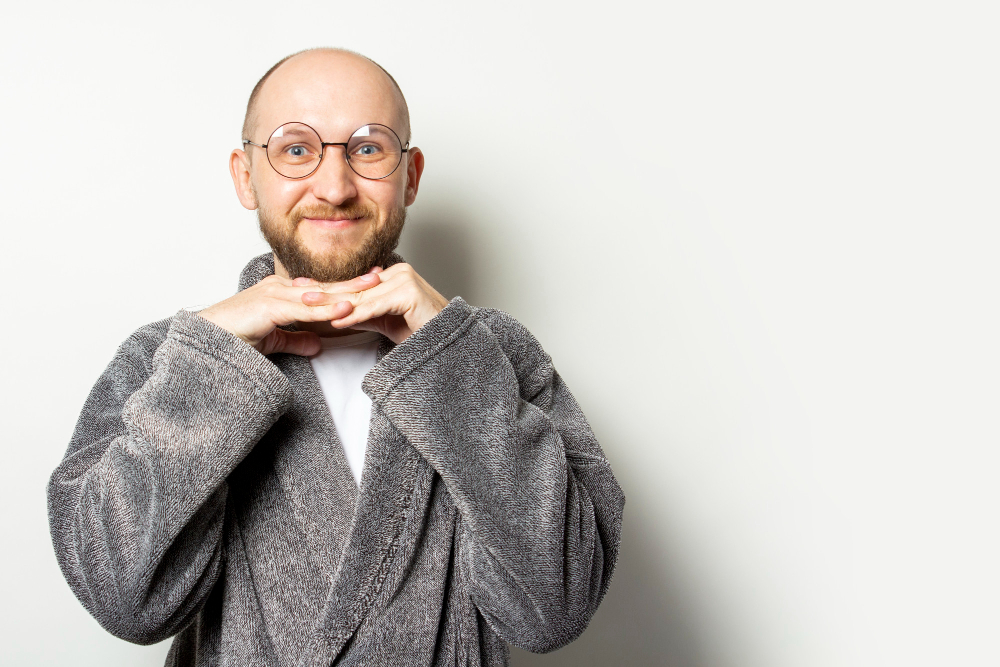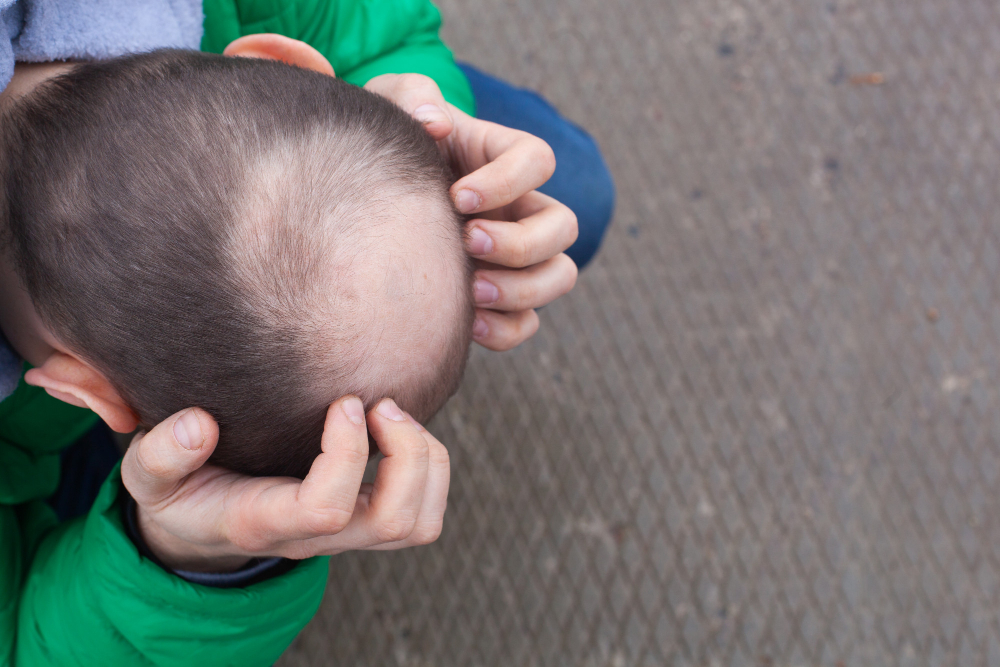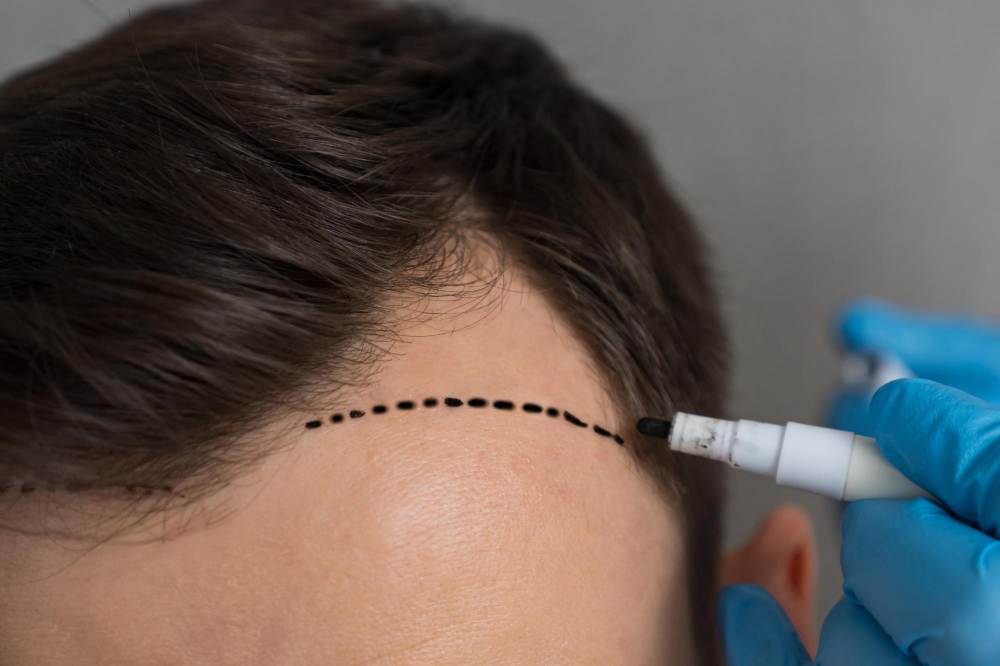Androgenic alopecia, commonly known as male or female pattern baldness, is a prevalent form of hair loss that affects both genders. It is characterized by gradual hair thinning, typically starting at the hairline or crown of the head, until eventually, the hair follicles stop producing hair. While genetics and hormonal imbalances are the leading causes of the condition, certain medical conditions and medications can also contribute to hair loss. Although androgenic alopecia is more common in older individuals, it can occur at any age and can have a significant impact on a person’s self-esteem and confidence. In this article, we will discuss the causes, symptoms, and differences in androgenic alopecia in females and males.
Understanding Androgenic Alopecia
Male or female pattern baldness, also known as androgenic alopecia, is a common type of hair loss that affects both men and women. A gradual thinning of the hair, typically beginning at the hairline or crown of the head, is what it is known for. Over time, the hair follicles shrink, producing thinner and shorter hairs until eventually, the follicle stops producing hair altogether.

Androgenic alopecia is a genetic condition, which means that it is inherited from one or both parents. While there is no known cure for androgenic alopecia, there are several treatments available that can help slow down or even reverse the effects of hair loss.
While the condition is more common in older individuals, it can occur at any age. Men are more likely to experience androgenic alopecia than women, but it can affect both genders. The condition can have a significant impact on a person’s self-esteem and confidence, and it is important to seek treatment if you are experiencing hair loss.
Learn all about hair loss, its signs and symptoms, underlying causes, and effective treatment options.
Androgenic Alopecia Cause
Androgenic alopecia, a condition that causes hair loss, can affect both men and women. It is a genetic condition that is inherited from one or both parents, and several factors contribute to its development. Here are some of the known causes of androgenic alopecia:
- Genetics: Androgenic alopecia is believed to be caused by a combination of genetic and hormonal factors. It is often passed down through families and is more likely to occur in individuals with a family history of the condition.
- Hormones: They also play a role in the development of androgenic alopecia. In men, the hormone dihydrotestosterone (DHT) is thought to be the main cause of hair loss. DHT causes hair follicles to shrink, leading to thinner and shorter hairs until the follicle stops producing hair altogether. In women, hormonal imbalances can contribute to hair loss, such as during pregnancy or menopause.
- Age: Androgenic alopecia is more common in older individuals, as the hair follicles naturally shrink and produce thinner hair over time.
- Medical Conditions: Certain medical conditions, such as thyroid disease or polycystic ovary syndrome (PCOS), can contribute to hair loss.
- Medications: As a side effect, certain medications, such as chemotherapy drugs, can cause hair loss.

It is important to note that while there are several known causes of androgenic alopecia, the condition is complex and not fully understood. More research is needed to fully understand the underlying mechanisms of the condition and develop effective treatments.
Symptoms of Androgenic Alopecia
The symptoms of androgenic alopecia can vary in men and women depending on the individual and the severity of the condition. Here are some common symptoms of androgenic alopecia:
- Thinning Hair: The most common symptom of androgenic alopecia is thinning hair, which can occur anywhere on the scalp. The hair may also appear less dense or have a visibly thinner texture.
- Receding Hairline: Men with androgenic alopecia may experience a receding hairline, which can be particularly noticeable around the temples or at the crown of the head.
- Widening Part: Women with androgenic alopecia may experience a widening part, where the hair appears to be thinner at the top of the head.
- Bald Spots: In some cases, androgenic alopecia can cause bald spots on the scalp. These may be small or large and can occur anywhere on the scalp.
- Increased Hair Shedding: Individuals with androgenic alopecia may notice an increase in hair shedding, particularly during grooming or washing the hair.
- Changes in Hair Texture: Androgenic alopecia can also cause changes in the texture of the hair, such as a reduction in volume or a change in the texture from curly to straight or vice versa.
- Scalp Itching or Irritation: Some individuals with androgenic alopecia may experience itching or irritation of the scalp, which can be uncomfortable and lead to further hair loss.
- Thinning of Body Hair: In some cases, androgenic alopecia can also cause a reduction in body hair, particularly in men.

It is important to note that while androgenic alopecia is primarily a cosmetic concern, it can also cause emotional distress and impact an individual’s self-esteem. If you are experiencing any of these symptoms, it is recommended that you speak with a healthcare professional or a hair loss specialist to determine the underlying cause and explore potential treatment options.
Androgenic Alopecia in Females vs. Males
Androgenic alopecia is a common form of hair loss that affects both men and women, but the pattern and progression of the condition can differ between the sexes. Here are some key differences between androgenic alopecia in females and males:
Androgenic Alopecia in Females:
- In females, androgenic alopecia typically presents as diffuse hair thinning across the entire scalp rather than the distinct pattern of balding that is commonly seen in males.
- The hairline is typically maintained in females, and the condition is often diagnosed later than in males because the hair loss is less noticeable.
- The underlying cause of androgenic alopecia in females is thought to be a combination of genetic and hormonal factors, with increased sensitivity to androgens like testosterone playing a role.
- While androgenic alopecia is most commonly associated with post-menopausal women, it can also occur in younger women and may be related to polycystic ovary syndrome (PCOS) or other hormonal imbalances.

Androgenic Alopecia in Males:
- In males, androgenic alopecia typically begins with a receding hairline and/or a bald spot on the crown of the head. Male pattern baldness is the term used to refer to this condition.
- The underlying cause of androgenic alopecia in males is also believed to be genetic and hormonal, with an increased sensitivity to dihydrotestosterone (DHT) – a hormone derived from testosterone – playing a role.
- Androgenic alopecia affects around 50% of men by the age of 50, and the likelihood of developing the condition increases with age.

It is important to note that while androgenic alopecia affects both men and women, the progression and severity of the condition can vary widely. Treatment options may also differ between the sexes and depend on individual factors such as age, underlying health conditions, and the extent of hair loss. Consulting with a dermatologist or hair loss specialist is recommended for a personalized treatment plan.
Androgenic Alopecia Cure
While there is no known cure for Androgenic Alopecia, there are many effective treatment options available. It is important to note that treatment is most effective when started early, so it is important to seek treatment as soon as you notice symptoms of hair loss.

In addition to the treatments discussed above, several lifestyle changes can help to slow down or prevent hair loss. These include eating a healthy diet, getting regular exercise, reducing stress, and avoiding harsh hair treatments such as tight braids, weaves, and chemical treatments.
Androgenic Alopecia Treatment for Men and Women
When it comes to treating androgenic alopecia, there are several options available for both men and women.
- Medications
One of the most popular options for treating androgenic alopecia is medication. The two most commonly prescribed medications for androgenic alopecia are finasteride and minoxidil. Finasteride is a medication that is taken orally and works by blocking the production of DHT, which is the hormone responsible for hair loss. Minoxidil, on the other hand, is a topical medication that is applied directly to the scalp and works by increasing blood flow to the hair follicles, thereby promoting hair growth.
- Hair Transplant Surgery
Another option for treating androgenic alopecia is hair transplant surgery. During this procedure, hair follicles are removed from one area of the scalp (usually the back or sides) and transplanted to the balding areas. This is a relatively invasive procedure and requires a significant amount of recovery time, but it can provide long-lasting results for those who are good candidates.

- Laser Therapy
Laser therapy is a newer option for treating androgenic alopecia. This involves using low-level laser light to stimulate hair growth. While the mechanism behind how laser therapy works is not fully understood, studies have shown that it can be an effective treatment option for both men and women with androgenic alopecia.
When it comes to managing any type of hair loss (alopecia), timely intervention is key. If you’re struggling to find effective solutions and the symptoms persist, it’s crucial to consult a hair loss dermatologist for personalized guidance and potential treatments. At RemoteDerm, our experienced dermatologists are well-versed in diagnosing and addressing the root causes of hair loss. Take the first step towards regaining healthy hair and boosting your confidence by getting an online consultation with our dedicated specialists in Canada.
Androgenic Alopecia Treatment for Men
When it comes to Androgenic Alopecia Treatment for Men, the most common options include both topical and oral medications. Minoxidil is a topical solution that is applied directly to the scalp, increasing blood flow to hair follicles and promoting hair growth. Finasteride, on the other hand, is an oral medication that inhibits DHT production. These treatments are often effective and have been backed by scientific research.

In addition to medications, there are also other treatment options available for Androgenic Alopecia, including:
- Hair transplants: A procedure that involves moving hair from a donor area to the balding area. This is a surgical option that can provide natural-looking results.
- Scalp micro pigmentation: A non-surgical procedure that uses pigments to simulate the appearance of hair follicles on the scalp. This option can be a good choice for those who do not want to undergo surgery.
Androgenic Alopecia Treatment for Women
Androgenic Alopecia in women can be treated using various methods, and the most common treatment is minoxidil. It is available in both topical solution and foam forms and works by increasing blood flow to the hair follicles, stimulating hair growth. Besides minoxidil, other medications such as spironolactone and oral contraceptives are also used for treating Androgenic Alopecia in women.

Here are some treatment options for Androgenic Alopecia in women:
- Minoxidil: It is a medication available in both topical solution and foam forms and helps increase blood flow to hair follicles, promoting hair growth.
- Spironolactone: This medication blocks the effects of androgen hormones on hair follicles, which can help prevent hair loss in women.
- Oral contraceptives: These medications help regulate hormone levels, which can help reduce hair loss caused by androgenic alopecia.
- Platelet-rich plasma therapy (PRP): This treatment involves injecting the patient’s own platelet-rich plasma into the scalp, which stimulates hair growth.
Final Thoughts
In conclusion, androgenic alopecia is a common type of hair loss that affects both men and women. The condition is genetic, but hormonal imbalances, age, medical conditions, and medications can also contribute to its development. Although there is no known cure for androgenic alopecia, several treatments are available that can help slow down or reverse hair loss. If you are experiencing any symptoms of androgenic alopecia, it is recommended that you speak with a healthcare professional or a hair loss specialist to determine the underlying cause and explore potential treatment options.

With the advancement of technology, Remotederm online dermatology consultation services can be accessed from anywhere, eliminating the need for long waits to visit dermatologists in person, making it easier for individuals to get the help they need.
FAQs
- Is androgenic alopecia more common in men or women?
It is more common in men, but it can affect both genders.
- Can androgenic alopecia occur at any age?
Yes, it can occur at any age.
- How is androgenic alopecia diagnosed?
A healthcare professional or hair loss specialist can diagnose androgenic alopecia by examining the scalp and hair follicles and conducting blood tests to rule out underlying medical conditions.
- Can androgenic alopecia be prevented?
While there is no guaranteed way to prevent androgenic alopecia, maintaining a healthy lifestyle, avoiding harsh hair treatments, and managing stress can help reduce the risk of hair loss.
- Can androgenic alopecia lead to other health problems?Can androgenic alopecia lead to other health problems?
Androgenic alopecia is primarily a cosmetic concern, but it can cause emotional distress and impact an individual’s self-esteem. In rare cases, severe androgenic alopecia may be linked to an increased risk of cardiovascular disease.
